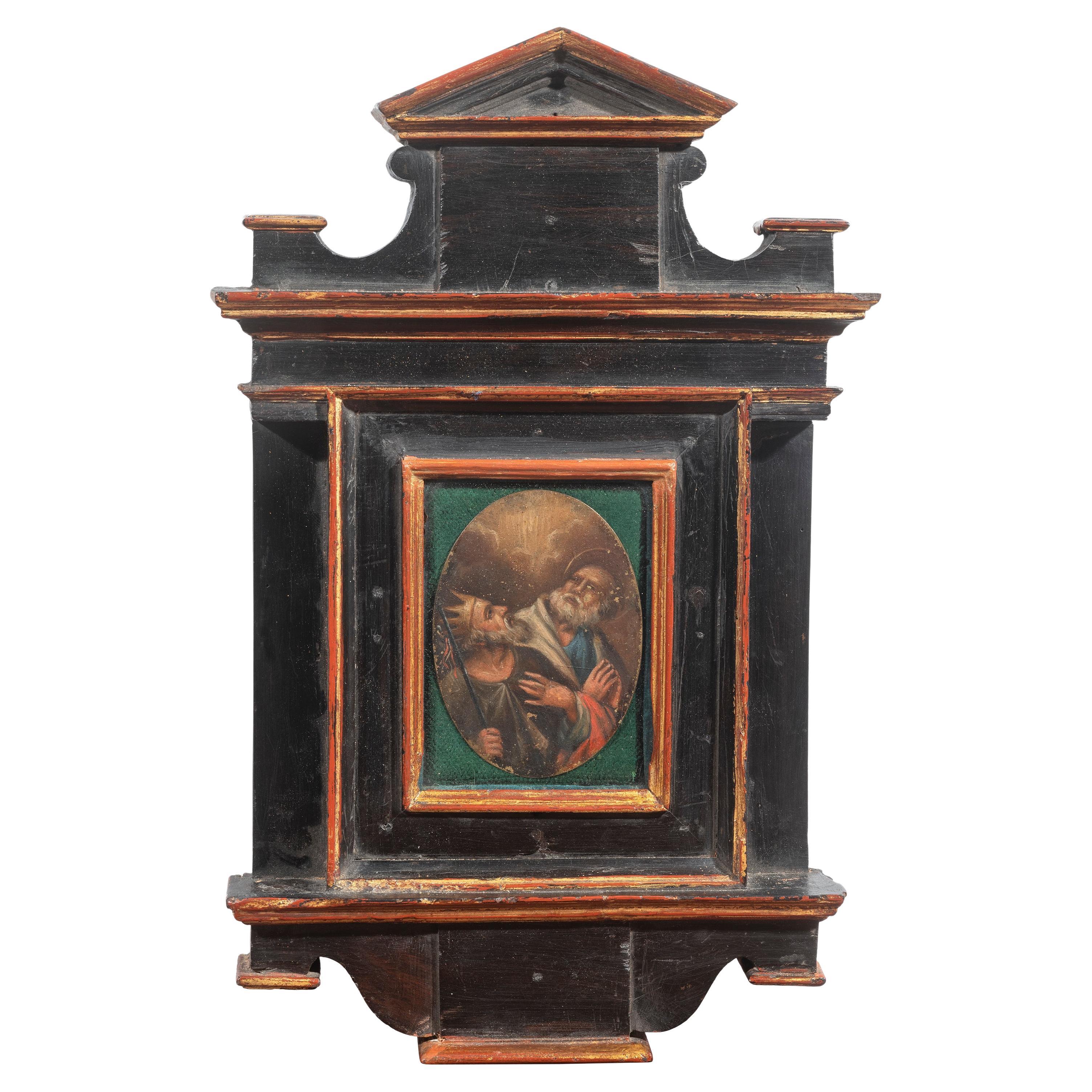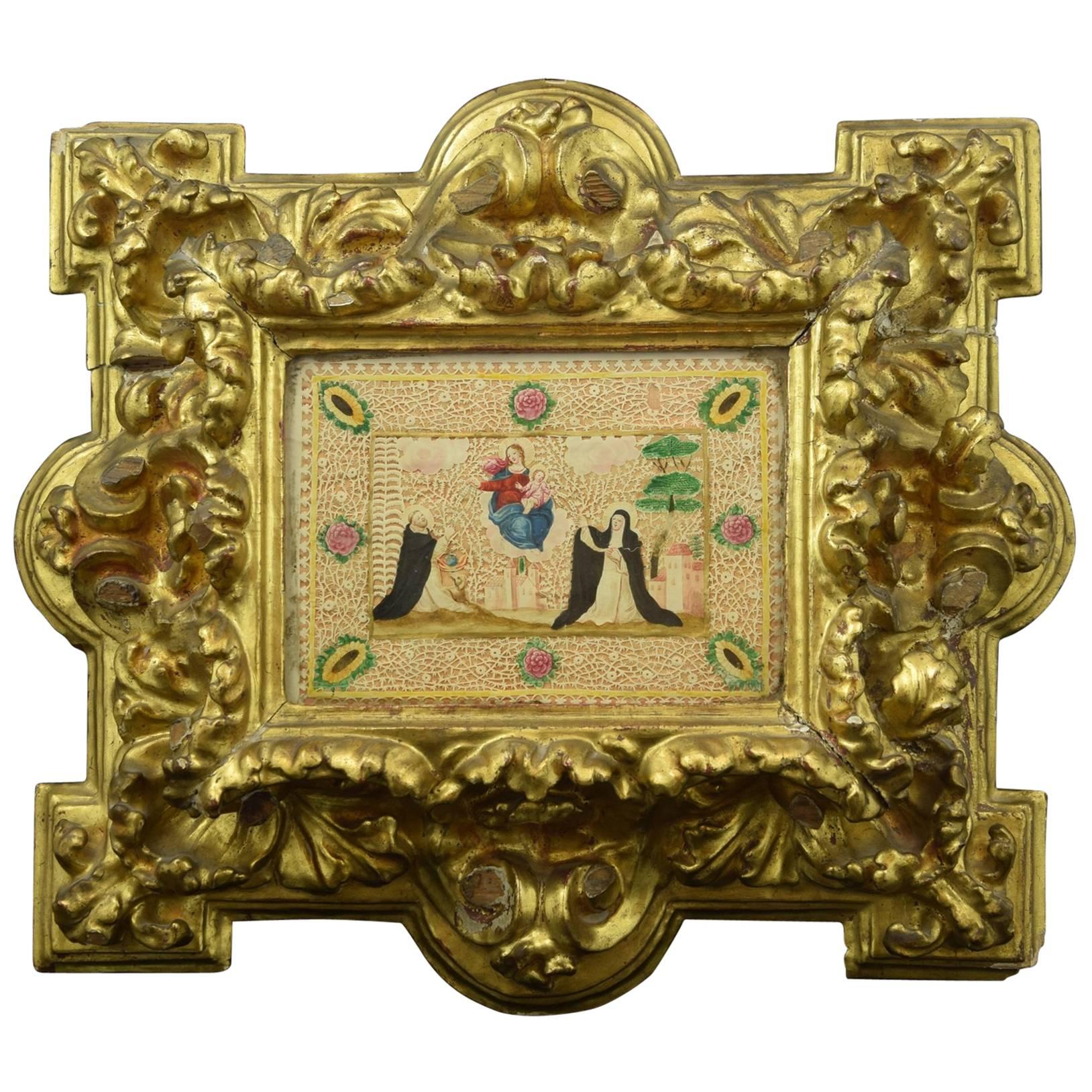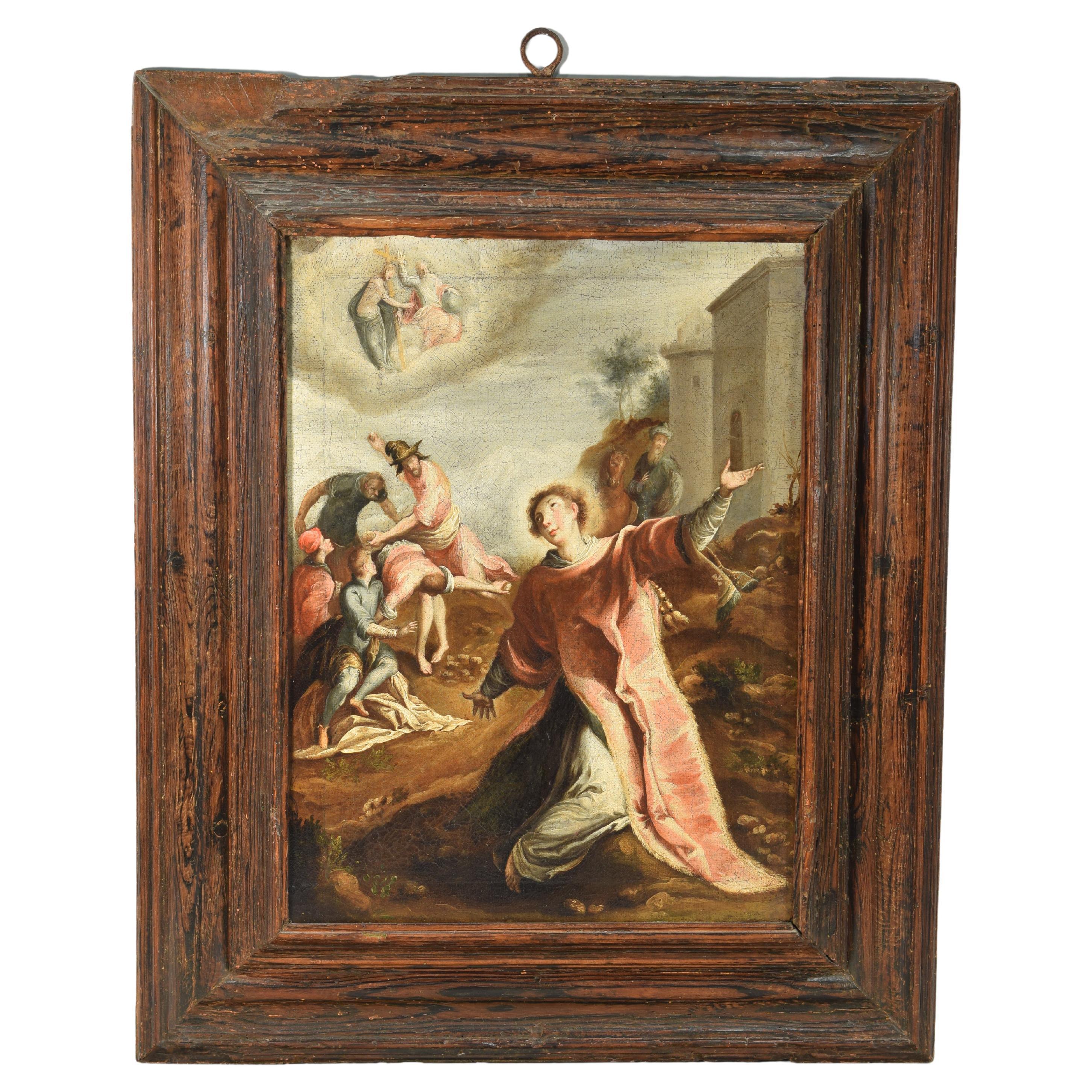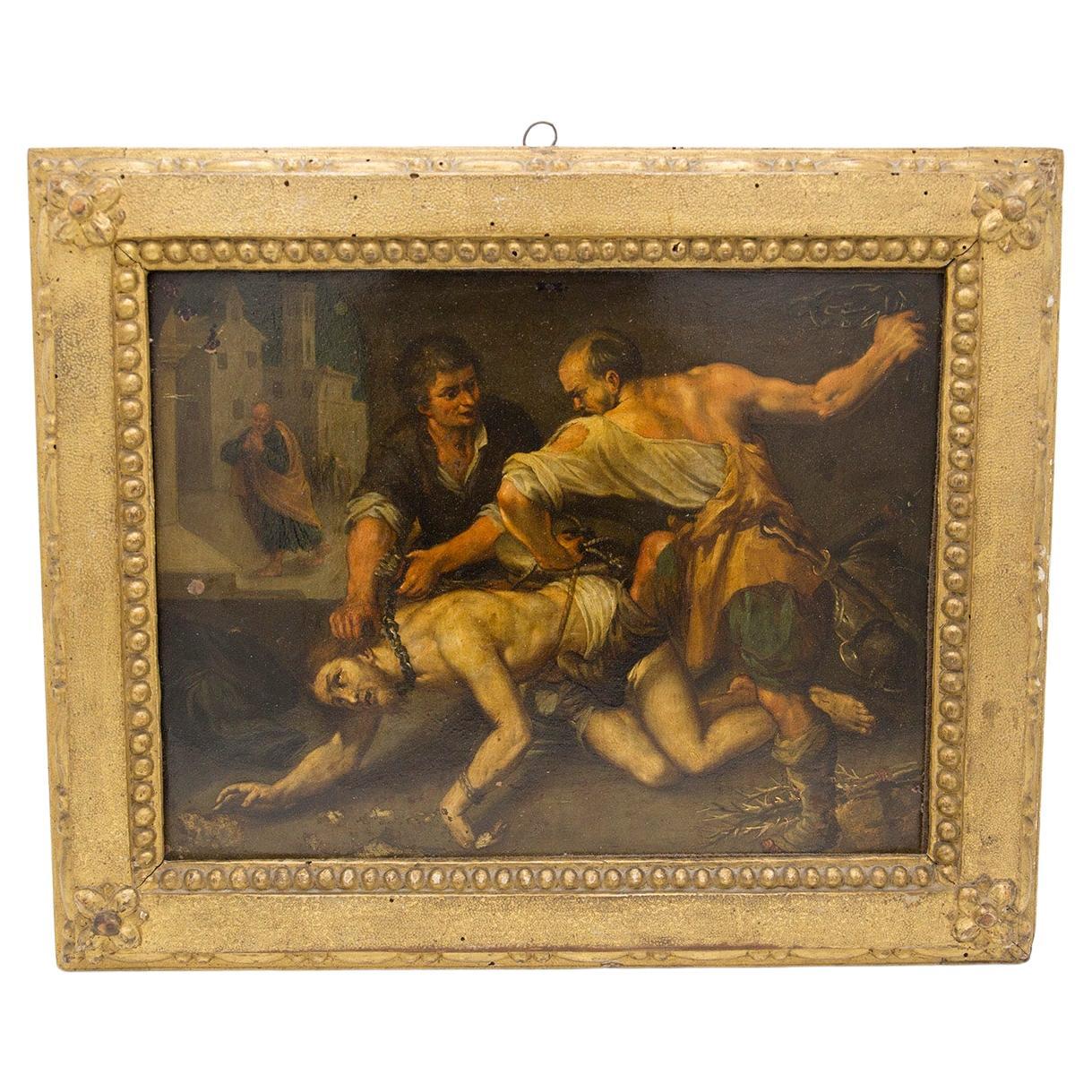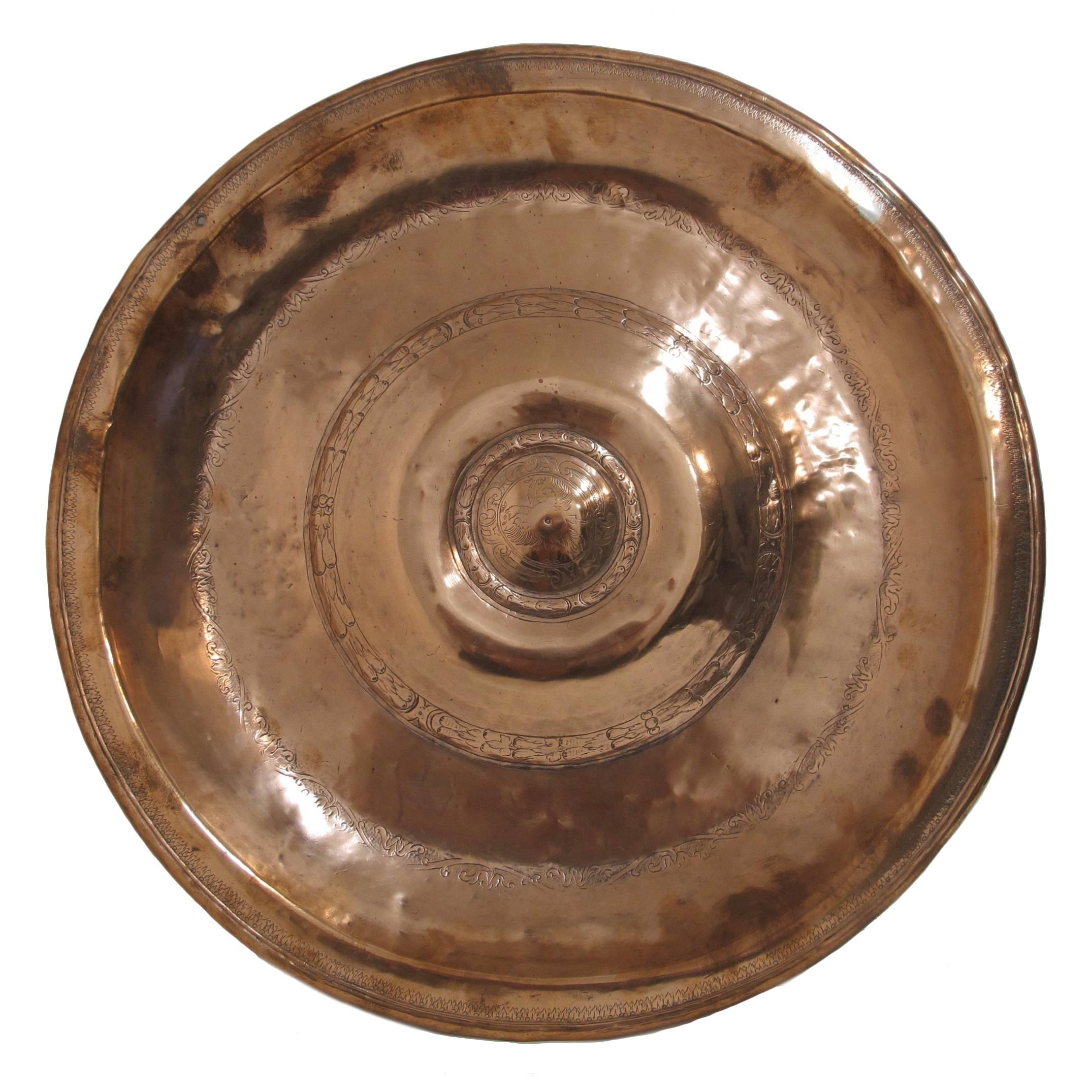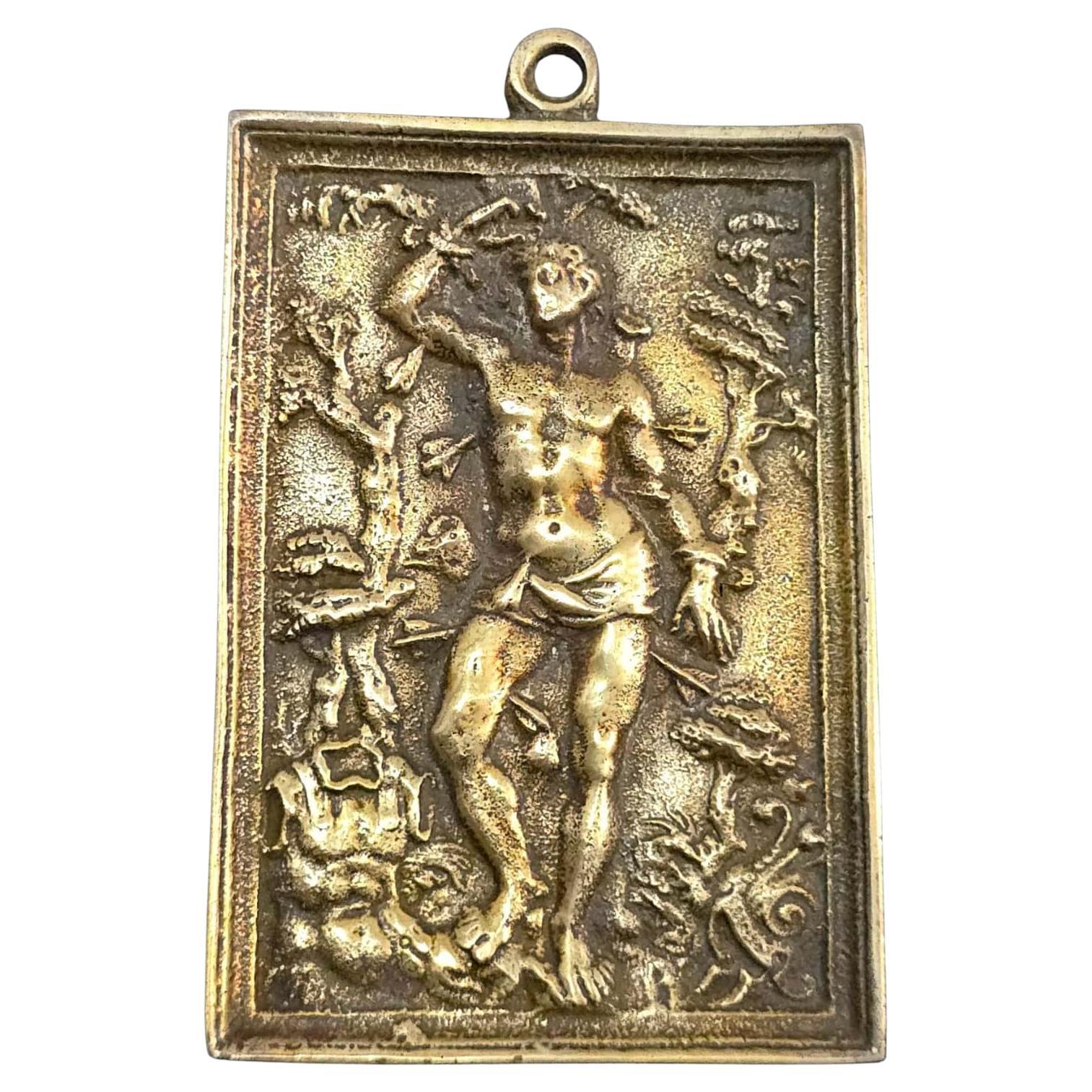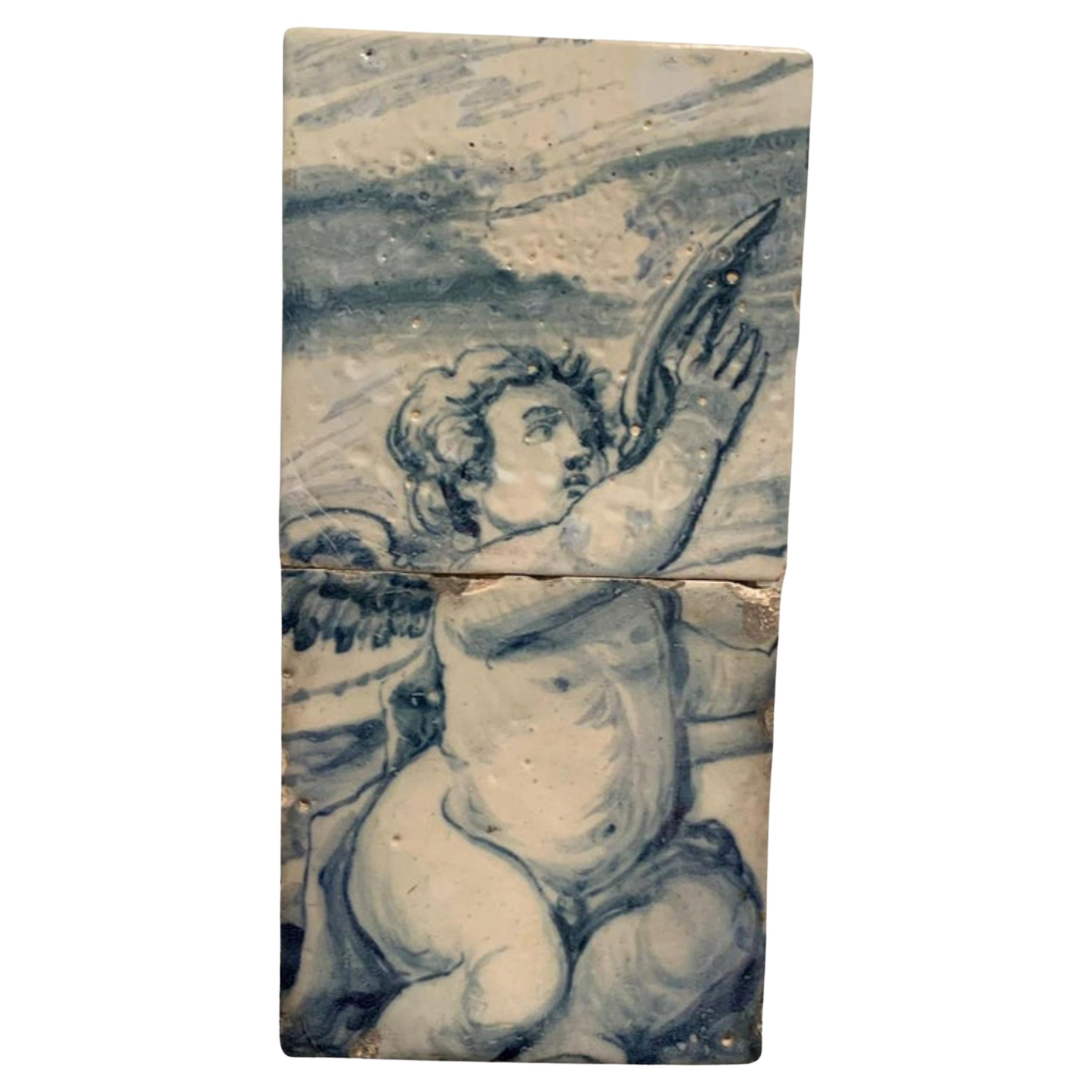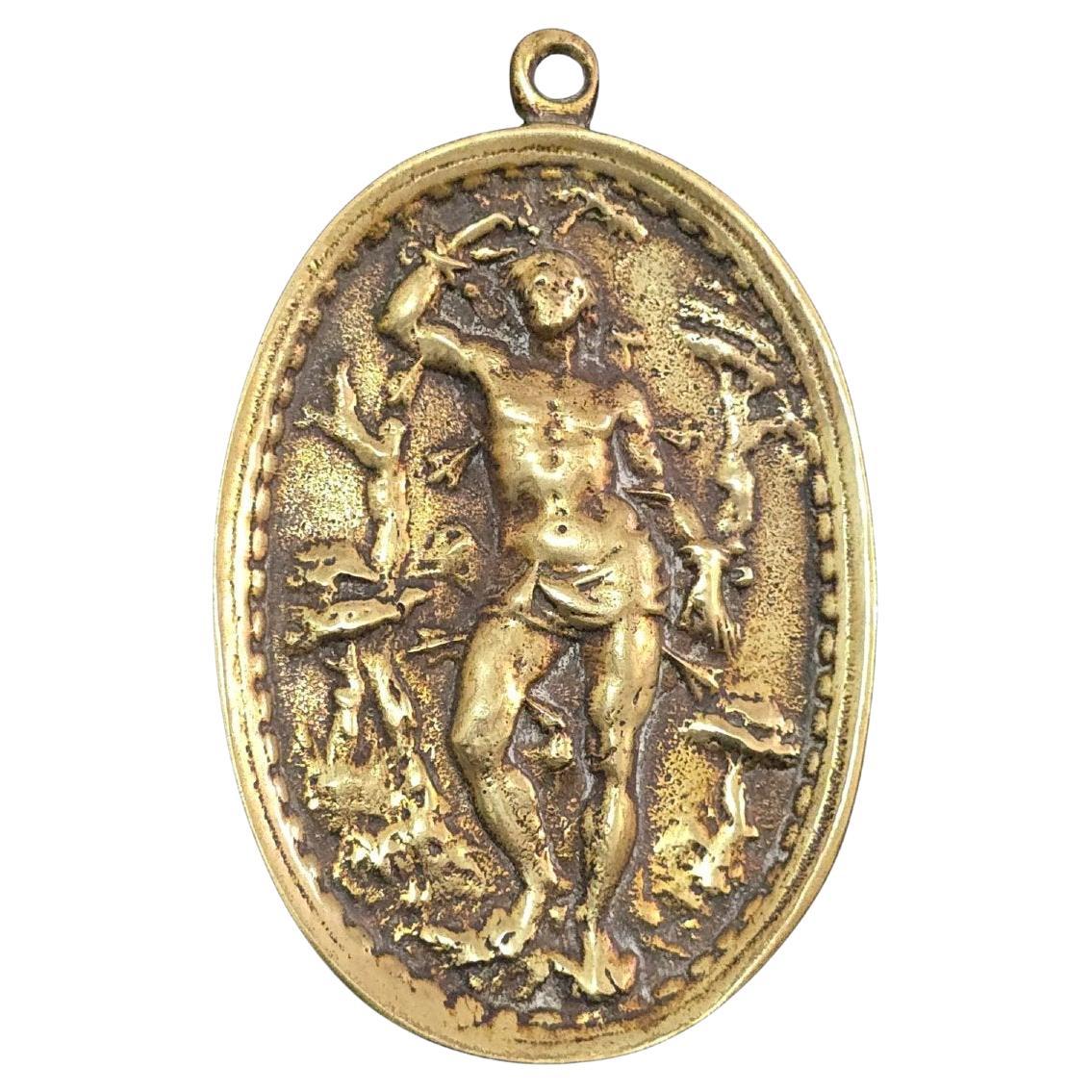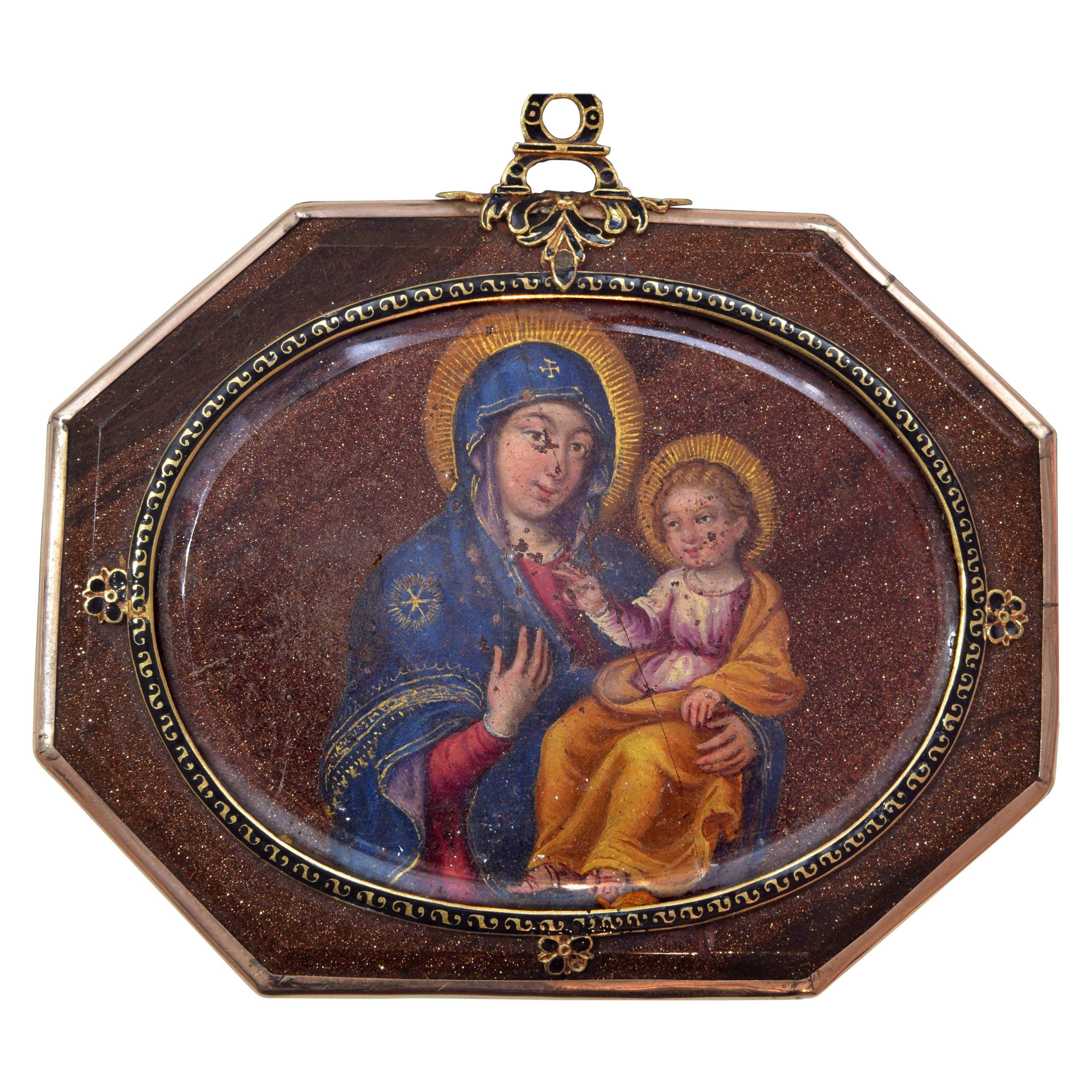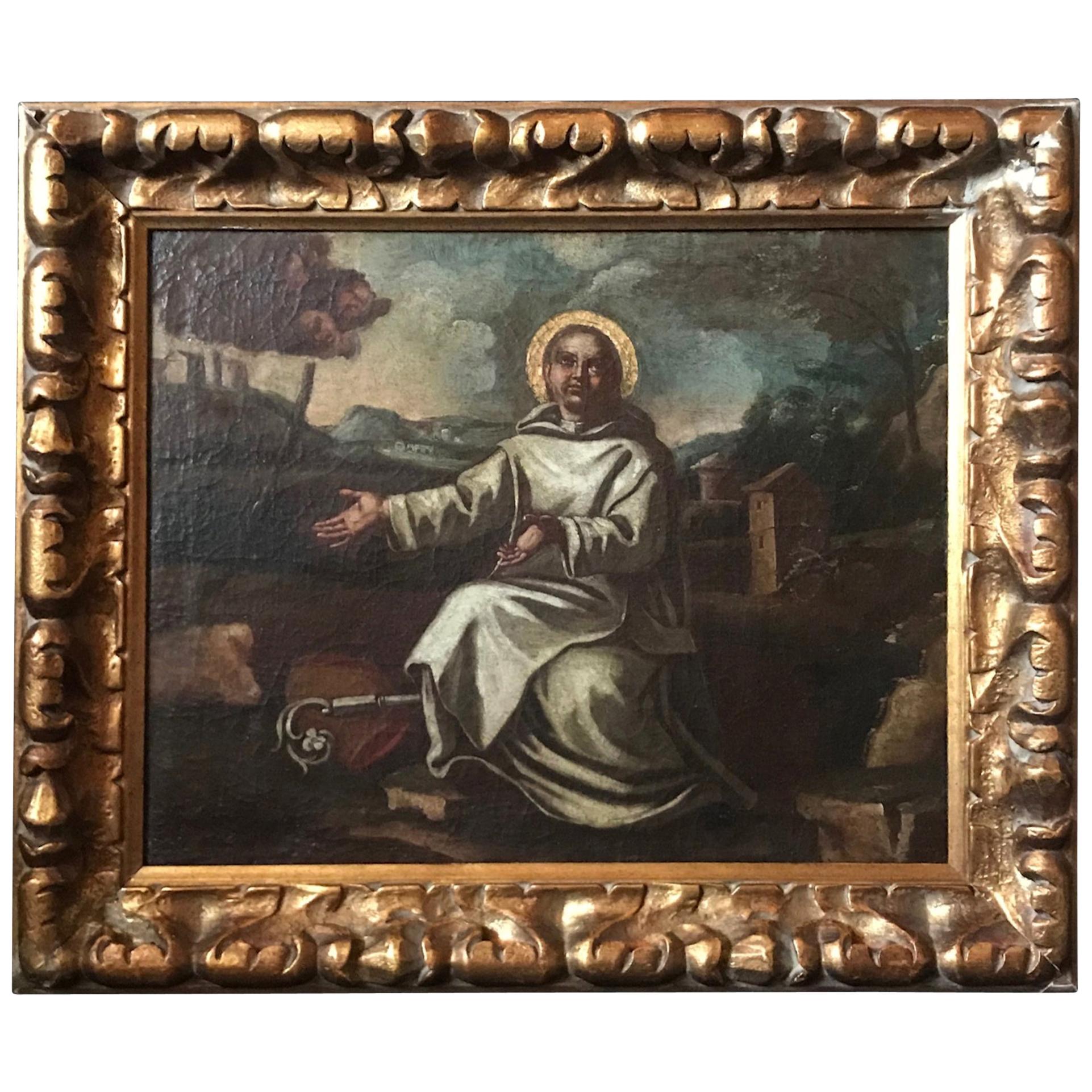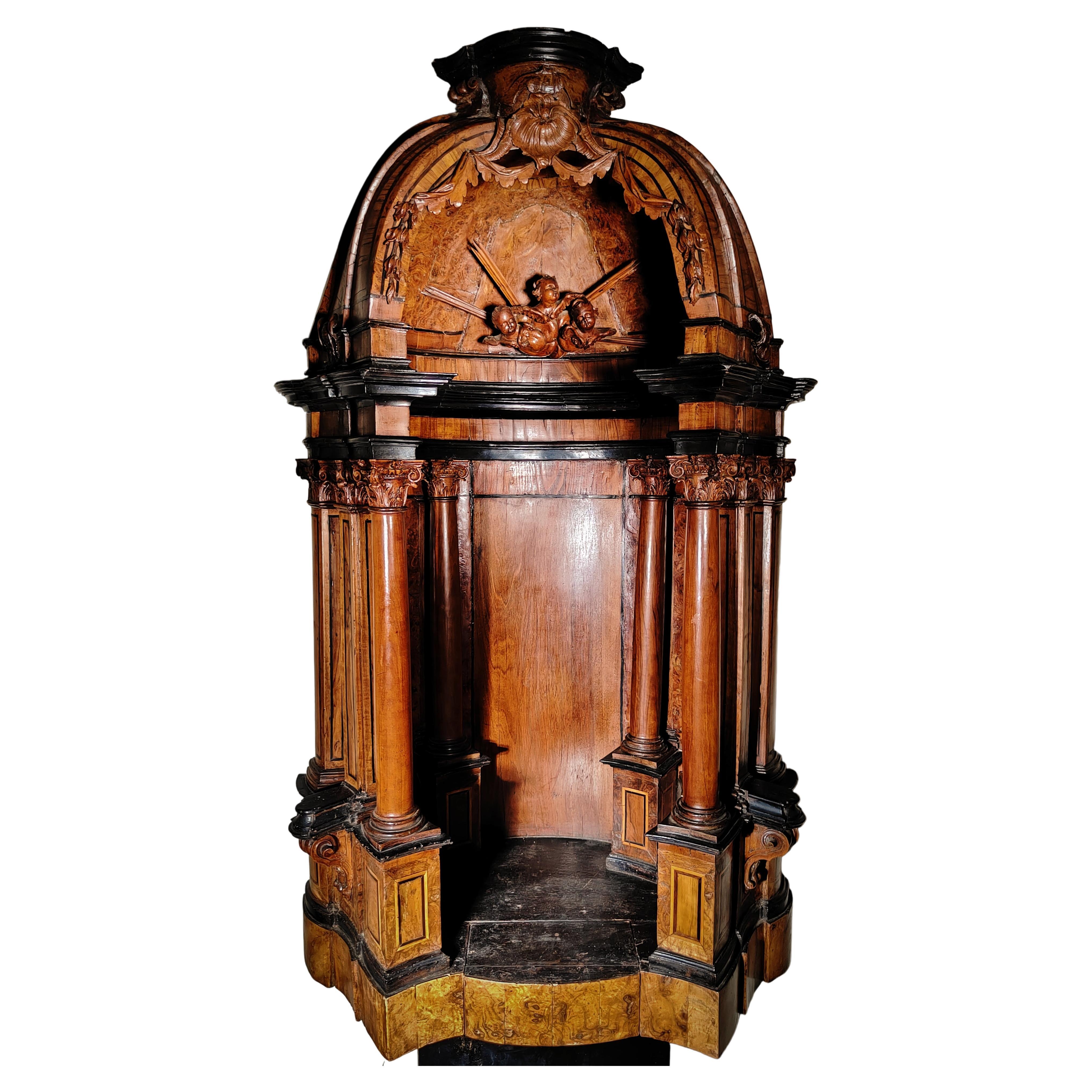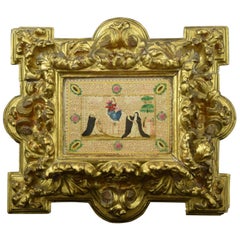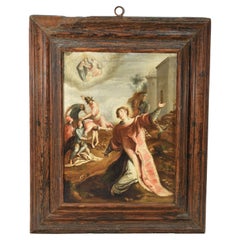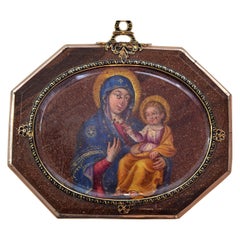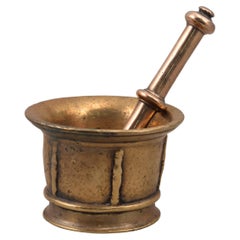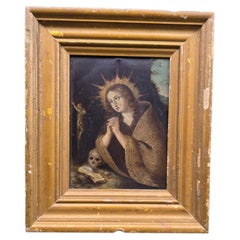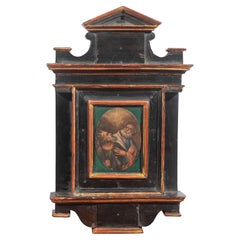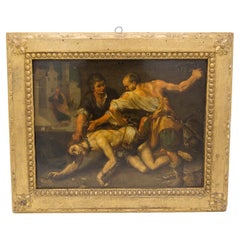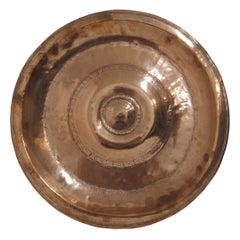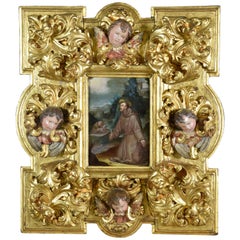
Saint Francis Oil on Copper with Important Frame, 17th Century
View Similar Items
Want more images or videos?
Request additional images or videos from the seller
1 of 15
Saint Francis Oil on Copper with Important Frame, 17th Century
About the Item
- Similar to:Ludovico Cardi (Artist)
- Dimensions:Height: 20.08 in (51 cm)Width: 18.12 in (46 cm)Depth: 3.15 in (8 cm)
- Style:Baroque (Of the Period)
- Materials and Techniques:
- Place of Origin:
- Period:
- Date of Manufacture:17th Century
- Condition:Refinished. Repaired. Wear consistent with age and use. Minor losses. Minor fading.
- Seller Location:Madrid, ES
- Reference Number:Seller: ZF04871stDibs: LU2951323679702
About the Seller
4.9
Vetted Professional Seller
Every seller passes strict standards for authenticity and reliability
Established in 1985
1stDibs seller since 2017
340 sales on 1stDibs
Typical response time: 6 hours
Authenticity Guarantee
In the unlikely event there’s an issue with an item’s authenticity, contact us within 1 year for a full refund. DetailsMoney-Back Guarantee
If your item is not as described, is damaged in transit, or does not arrive, contact us within 7 days for a full refund. Details24-Hour Cancellation
You have a 24-hour grace period in which to reconsider your purchase, with no questions asked.Vetted Professional Sellers
Our world-class sellers must adhere to strict standards for service and quality, maintaining the integrity of our listings.Price-Match Guarantee
If you find that a seller listed the same item for a lower price elsewhere, we’ll match it.Trusted Global Delivery
Our best-in-class carrier network provides specialized shipping options worldwide, including custom delivery.More From This Seller
View AllFrame with Vellum Painting, 17th Century
Located in Madrid, ES
Carved and gilded frame with painting on vellum, "Virgin of the Rosary with Santo Domingo de Guzmán and Santa Catalina of Siena", 17th century. Registration in the back zone (Mr. Jos...
Category
Antique 17th Century European Baroque Religious Items
Materials
Leather, Wood, Paint
Saint Stephen, Oil on Canvas, 17th Century, After Aegidius Sadeler's Engraving
Located in Madrid, ES
Saint Stephen. Oil on canvas. 17th century, following Aegidius Sadeler's engraving (inspired by Jacopo Palma).
The figure of the Saint appears in the ...
Category
Antique 17th Century Spanish Baroque Religious Items
Materials
Other
Devotional Pendant, Oil on Aventurine, Gold, Enamel, Spain, 17th Century
Located in Madrid, ES
Devotional pendant or reliquary. Oil painting on aventurine, enamel, gold. Spain, 17th century.
Medallion or devotional pendant or reliquary made of aventurine or aventurine with an octagonal shape and faceted fronts, enhanced with a series of enamels combining black and gold, which protect two oil paintings with a Catholic Christian religious theme, located one on each side of the piece. Protected, you can see a very particular Virgin with Child for being inspired by the Icon of the Madonna del Popolo (Rome, Italy), and a simplified Martyrdom of San Lorenzo (the saint, the grill and an angel with a crown and the palm corresponding to the subject). The edges of the piece have been protected with simple metal elements.
The painting of San Lorenzo follows a common composition in the Spanish school, and would recall works such as the painting of the main altar of the Church of San Lorenzo de Huesca, for example, but also others such as the engraving by Marcantonio Raimondi (executed around 1527) in some details. The so-called icon of the Madonna del Popolo was well known for being considered as made by Saint Luke, and was brought to the church of the same denomination by Gregory IX from the Sancta Sanctorum of the Lateran Palace after a flood caused a terrible plague in the city and through a solemn procession with the image of Santa Maria del Popolo.
Regarding the material of the piece, a certain type of glass and a type of quartz (which can be green or reddish-brown, and usually has tiny elements of yellow mica that give it golden reflections) is known as aventurine or aventurine. In the first case, it is known that “aventurine” or “stellaria” appears mentioned in the Murano workshops for the first time during the first quarter of the 17th century, in reference to a very complicated production paste (it is said that the name comes from of this circumstance, that is, that its creation was due to luck or luck) that imitates the effects of that stone (from India and Russia at that time) thanks to the inclusion of copper particles, and that it was used as if out of stone (cut) given the complexity of its use in blowing (practically impossible). And, dealing with this material, it is necessary to mention “The Nativity” by Pietro da Cortona, dated around 1656, which is kept in the El Prado...
Category
Antique 17th Century Spanish Baroque Religious Items
Materials
Gold, Enamel, Other
Bronze Mortar with Pestle, Spain, 17th Century
Located in Madrid, ES
Mortar with hand. Bronze. XVII century.
Mortar with a circular base, cylindrical body and slightly outwardly flared mouth, decorated with a series of smooth horizontal moldings arranged both in the lower and upper areas and with simple vertical elements (which still maintain slight balustraded shapes) derived from of the ribs that these specimens used to have in the medieval Spanish...
Category
Antique 17th Century Spanish Baroque Scientific Instruments
Materials
Bronze, Other
Devotional Pendant, Saint James the Great, Bronze, Spain, 17th Century
Located in Madrid, ES
Devotional medal, Santiago Apóstol. Ormolu, 17th century.
Openwork devotional medal with the image of Santiago Apóstol in the center, on a pedestal and holding a staff and a book, surrounded by a crown of leaves knotted with two loops above and below. Copies similar to the present one are found in the Museum of Pilgrimages in Santiago de Compostela...
Category
Antique 17th Century Spanish Baroque Religious Items
Materials
Bronze
“Saint Dominic and Saint Francis”, Colonial School, 18th Century
Located in Madrid, ES
“Saint Dominic and Saint Francis”. Polychromed terracotta. Colonial (South America) school, 18th century.
It is narrated in this piece, with a remarkable...
Category
Antique 18th Century South American Baroque Religious Items
Materials
Terracotta
You May Also Like
Oil on copper, 17th century. “Saint Mary of Egypt, Penitent“
Located in Madrid, ES
Oil on Copper — "Saint Mary of Egypt, Penitent," Spanish or Flemish School, 17th Century
A captivating oil on copper painting depicting Saint Mary of Egypt, dating from the 17th cen...
Category
Antique 17th Century European Baroque Religious Items
Materials
Copper
17th Century Oil on Copper Saint Joseph and King David
Located in Firenze, IT
SHIPPING POLICY:
No additional costs will be added to this order.
Shipping costs will be totally covered by the seller (customs duties included).
Miniature on copper...
Category
Antique Mid-17th Century Italian Baroque Paintings
Materials
Copper
Caravaggesque Oil on Copper "Flagellation of Christ" Baroque Sicilian, 17th Cent
By (After) Caravaggio
Located in Milano, IT
Splendid 17th-century Italian painting by unknown artist, but certainly a follower of Caravaggio, relying on style and drawing.
The painting has a very beautiful gilded wooden frame, with a subtle greek with spheres and an overlying rectangular frame with sinuous flowers on each corner, very elegant and beautiful.
The painting depicts one of the most depicted religious scenes ever, the scourging of Christ, and is entirely done in oil on copper.
The scourging of Jesus is an episode narrated in the Gospels (Mk15:15-16; Mt27:26-27; Lk23:16-26; Jn19:1-17[1]).
Scourging is a flogging, particularly bloody, by means of sticks, rods or cat-o-nine-tails, the latter instrument consisting, in the Roman typology, of a short stick to which were secured several strings ending in metal claws, leads and bone splinters that caused tremendous lacerations and fractures to the tortured person. Chains are used in this scene, both to immobilize Jesus Christ and to flog him, as we can see in the upper right hand of the scourger.
According to some personal research, it turned out that the actual scourging of Christ was mostly depicted at the column, while this Christ is on the ground, so presumably Christ here is scourged during the Way of the Cross at one of those stages where he fell.
The painting has a very dark coloring, which is why this painting is believed to faithfully follow Caravaggio's style of dry, authoritarian brushstrokes. The painting shows a figure agonizing on the ground that continues to receive beatings and floggings of all kinds, representing Christ; his face is crucified in a loquacious expression of pain, he turns his eyes to heaven as if to invoke God, but at the same time those same eyes admonish the wickedness and arrogance inherent in humanity.
Christ has one hand resting on the ground in the act of holding himself, while the other takes a completely unnatural stance against the barren ground. His body appears hardened to wanting to parry the blows, his legs are curled up on his knees as he takes kicks from the soldier above him. Christ is depicted pinned down from the neck with a very large and strong black iron bolt held by the other soldier. The soldier on the right in the foreground wears a one-shoulder tunic with an orange tunic and blue pants. On his feet he wears gray shoes, at his waist he has a belt with an iron helmet...
Category
Antique 17th Century Italian Baroque Paintings
Materials
Copper
$16,688 Sale Price
20% Off
17th Century Copper Alms Plate
Located in San Francisco, CA
A 17th century or earlier large copper alms dish or alms plate.
Category
Antique 17th Century European Religious Items
Materials
Copper
Gilt Bronze Plaque of Saint Sebastian — 17th Century
Located in Madrid, ES
Gilt Bronze Devotional Plaque of Saint Sebastian — Spanish, Early 17th Century
An exceptional gilt bronze devotional plaque depicting Saint Sebastian, created in Spain during the ea...
Category
Antique 17th Century Baroque Religious Items
Materials
Bronze
17th Century Portuguese Tile Panel Representing "The Saints"
Located in Madrid, ES
17th Century Portuguese Tile Panel
Representing "The Saints"
restored
15cm x 29cm
Amazing Unique Art Work.
Category
Antique 17th Century Portuguese Baroque Religious Items
Materials
Porcelain
Recently Viewed
View AllMore Ways To Browse
17th Century Oil Paintings Giltwood Frames
Spanish Chapel
Rings 1600 Century
St Francis Spanish
Bronze Altar Cross
French Rosary
Pray Kneeler
Reliquary Box
Russian Bronze Icon
Spanish Colonial Retablos
Used Catholic Religious Statues
Boris Schatz
Entombment Of Christ
French Tabernacle
German Menorah
Glass Crucifix
John Brown Bible
Painted Wooden Crucifix

